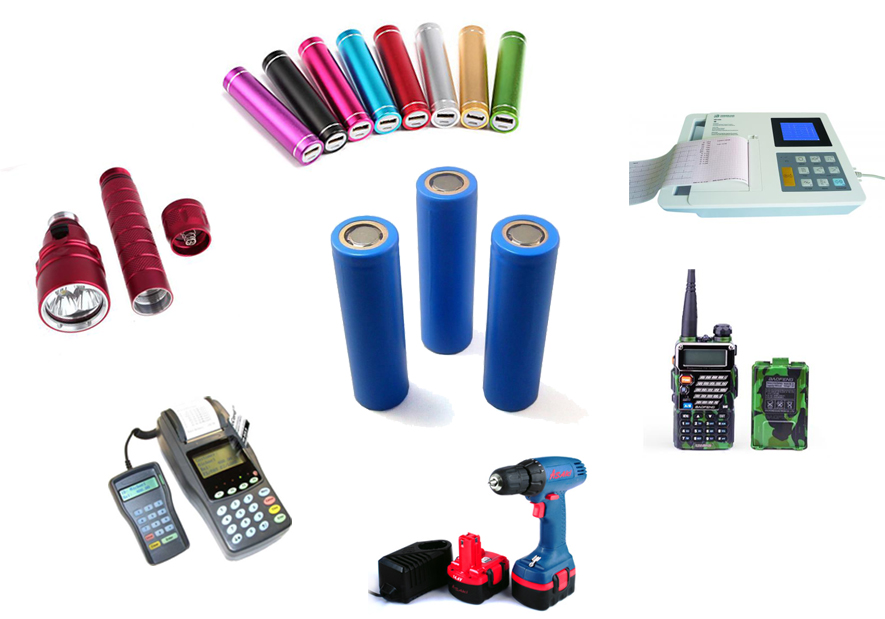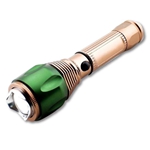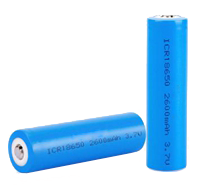Lithium Ion has the highest power density of any rechargeable battery chemistry. It is very light weight and offers great cycle life which makes it the ideal product for many new design solutions. Main application fields: mobile power supplies, consumer electronic products, Torch, miner’s lamp, toys and model airplane.
ADVANTAGES
(1) High energy density: 150~200Wh/kg or 350~450Wh/L
(2) Long cycle life: ≥ 500cycles (according to IEC61960-1)
(3) Manufactured under IEC to assure quality
(4) Internal PCB protects against under and over charging - low voltage 2.8V, high voltage 4.2V
(5) Tags, plugs, connectors PCM/PCB are available
(6) OEM and ODM orders are welcome
APPLICATION
Main application fields: Mobile communication terminals, consumer electronic products,Industrial Devices,Medical equipment,Security system,Emergency system and Illuminate devices .

CLASSIC CASE
18650 lithium battery for LED lights
|
With the widening of domestic market, the reason that Mirror LED lights, wardrobe LED lights and other household LED lights are applied to indoors, propose high security and energy saving requirements. Compared with NiCd/NiMH battery LED lights, home LED lights Lithium batteries the most advanced LED lights Lithium battery in the world. 18650/2600mAh/3.7V known brand lithium-ion battery cell, with the high energy ratio and security.
|
|

|

ICR18650 3.7V 2600mAh
|
Q:What are the disadvantages of Lithium Ion batteries compared with other rechargeable batteries?
A:Lithium-ion batteries are more expensive than similar capacity NiMH or NiCd batteries. This is because they are much more complex to manufacture. Li-ion batteries actually include special circuitry to protect the battery from damage due to overcharging or undercharging. They are also more expensive because they are manufactured in much smaller numbers than NiMH or NiCd batteries. Li-ion batteries are becoming less expensive and over time we should see their price decrease significantly.
Lithium ion batteries are not available in standard cells sizes (AA, C and D) like NiMH and NiCd batteries. Lithium-ion batteries also require sophisticated
chargers that can carefully monitor the charge process. And because of their different shapes and sizes each type of Li-ion battery requires a charger designed to accommodate its particular size. This means lithium ion battery chargers are more expensive and more difficult to find than NiMH and NiCd battery chargers.
Q:Are Lithium Ion batteries available in standard sizes like AA , C or D cell size?
A:No, Lithium-ion batteries are not available in standard sizes. We believe this is because it would be too easy for users to inadvertently put them in a charger not designed for Lithium-ion batteries creating a potentially dangerous situation. (If an alkaline battery is put into the wrong charger it might leak or even burst, but a lithium-ion battery put into a NiCd or NiMH charger not designed for lithium-ion, might ignite. Also, because Li-ion batteries operate at much higher voltage(typically 3.7V per cell than the 1.2 to 1.5V of most cell batteries, designing a 1.5V lithium-ion cell would be expensive.
Q:Why do batteries packs with zero voltage or low voltage?
(1) One of the cells voltages is 0V;
(2) Plugs are short or open circuit, or ill touched;
(3) Lead wires are broken from the soldering or weakly soldered;
(4) Wrong battery connection or the connection tabs are miss or weak weld or broken off.
Q:What is the difference between Lithium batteries and Lithium Ion batteries?
A:There are several important differences. The practical difference between Lithium batteries and Lithium-ion (Li-ion) batteries is that most Lithium batteries are not rechargeable but Li-ion batteries are rechargeable. From a chemical standpoint Lithium batteries use lithium in its pure metallic form. Li-ion batteries use lithium compounds which are much more stable than the elemental lithium used in lithium batteries. A lithium battery should never be recharged while lithium-ion batteries are designed to be recharged hundreds of times.
Q:What is the best way to store Lithium Ion batteries?
A:Lithium-ion batteries can hold a charge for many months. It is best to store a lithium-ion battery with a partial or full charge. Occasionally, a lithium-ion battery with a very low charge is stored for a long period of time (many months) and its voltage slowly drops to below the level at which its built in safety mechanism allows it to be charged again. If the battery is going to be stored for several months it’s a good idea to take it out and recharge it after a few months.Better yet would be to actually use the battery every few months and then leave it partially or fully charged.